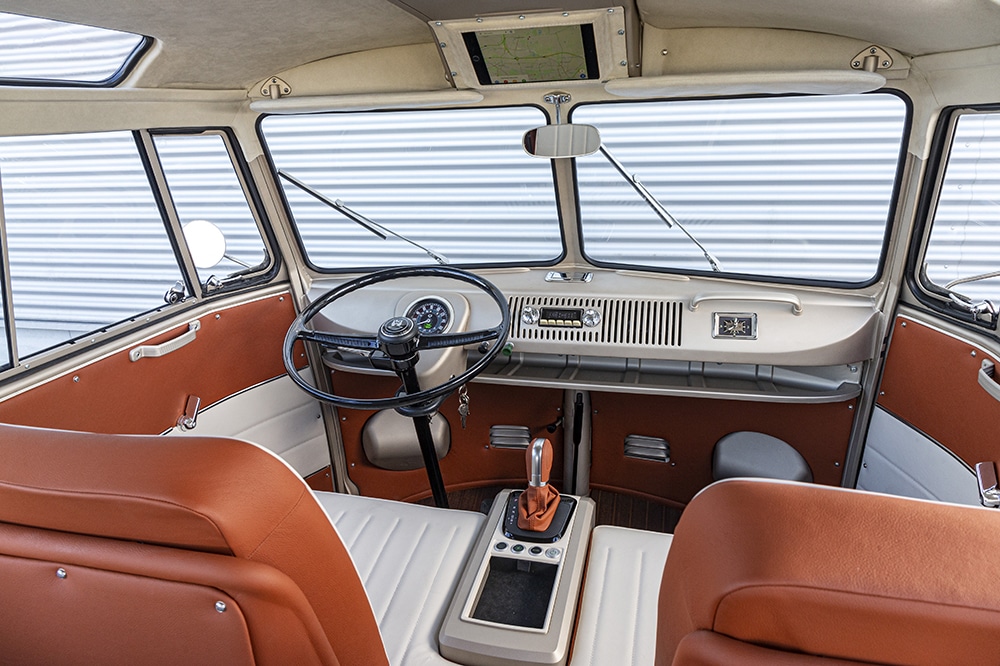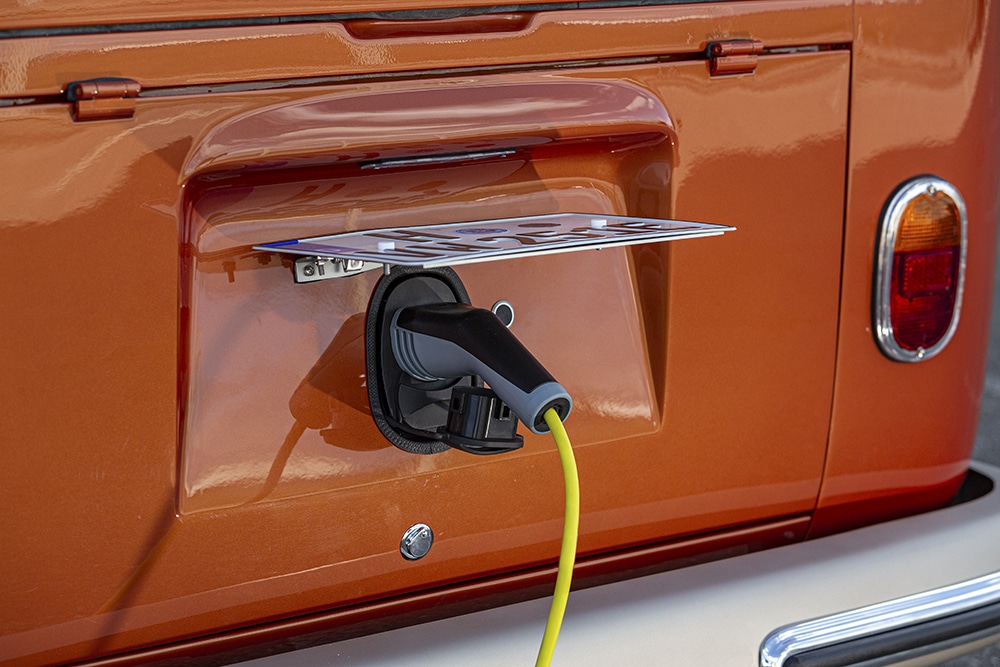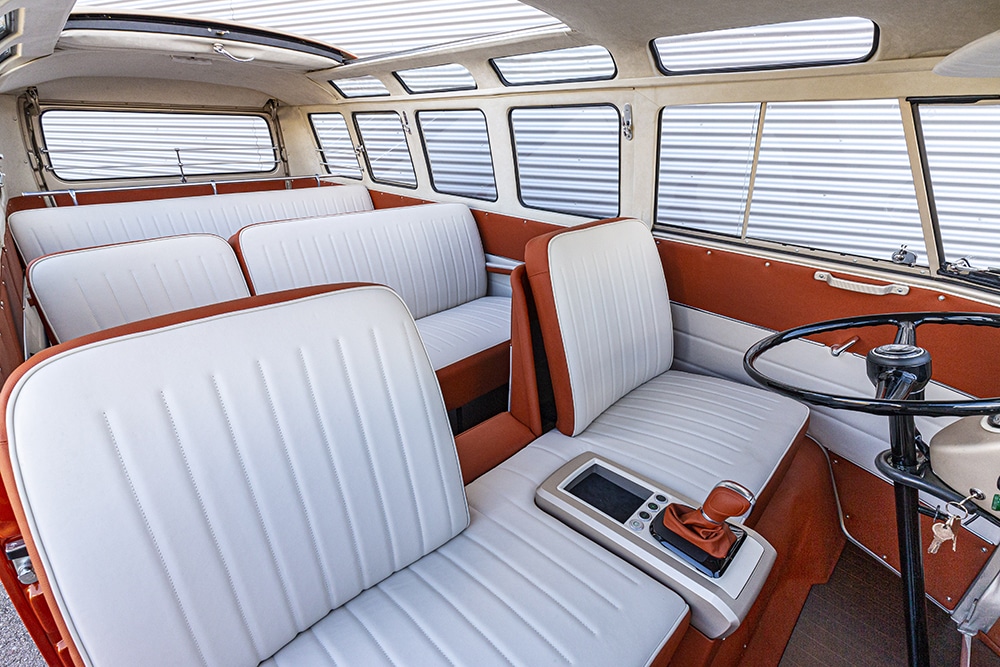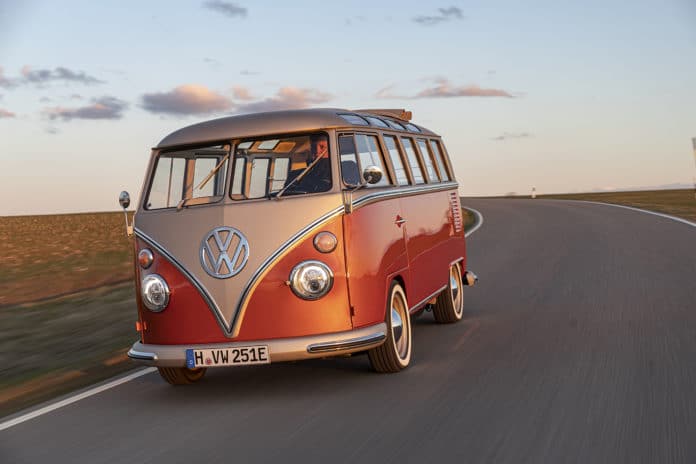Volkswagen Commercial Vehicles (VWCV) has presented for the first time the e-BULLI, an all-electric vehicle that produces zero emissions on the road. It uses the drive technology of current electric cars from the Wolfsburg-based company and is based on a restored T1 Samba bus from 1966.
In order to convert the historic BULLI to a locally emission-free drive, VWN teamed up with two partners: the drive experts from Volkswagen Group Components and the company eClassics from Renningen, which specializes in electric car conversions Stuttgart.

The e-BULLI uses the current electric drive components from the Volkswagen Group. The 32 kW (44 hp) four-cylinder boxer engine gave way to an electric motor with 61 kW (83 hp). With a torque of 212 Nm, the new electric drive offers more than twice the power of the original T1 engine from 1966 (102 Nm). The maximum torque is also immediately available – typical for electric motors.
The maximum speed is 130 km/h (81 mph), which represents a notable improvement over the 105 km/h (65 mph) that the original model reached with its 44 hp gasoline engine. The 1-speed gearbox also has a so-called “B” position for braking power recovery, which can take advantage of the energy generated by braking and recharge the battery.

The electric motor drives the rear wheels, and the battery pack mounted under the floor is 45 kWh. The lithium-ion battery provides the range of more than 200 km (124 miles) at its best. Thanks to the e-BULLI’s CCS charging socket, the high-voltage battery can be charged at DC fast-charging points with up to 50 kW of charging power – not so bad for a 54-year-old car! In this case, it can be charged up to 80% in 40 minutes.
The interior is much new, especially in the front, where the driver’s seat is located. If possible, modern components are styled antique. There are eight seats inside, which are two-tone to match the exterior paintwork. Solid wood with a floorboard look was used for the floor.

Music onboard comes from an authentic-looking retro-style radio, which, however, is equipped with cutting edge technology such as DAB+, Bluetooth, and USB. The radio is linked to a sound system with out-of-sight components, including an active subwoofer.
On the outside, modern LED lights are mounted in the round headlights. In addition, the entire chassis should be redesigned with new front and rear trolleys as well as shock absorbers that will provide better driving characteristics. And for those who want to keep track of their e-BULLI even when not running, there is a connection to Volkswagen’s app, where the driver can see, among other things, the charging status and range.
You can even buy this combination of a classic car and an electric drive. The conversion kit for e-BULLI will be released at €64,900 (about $70,000) and will also be available for the later T2 and T3 generations.
